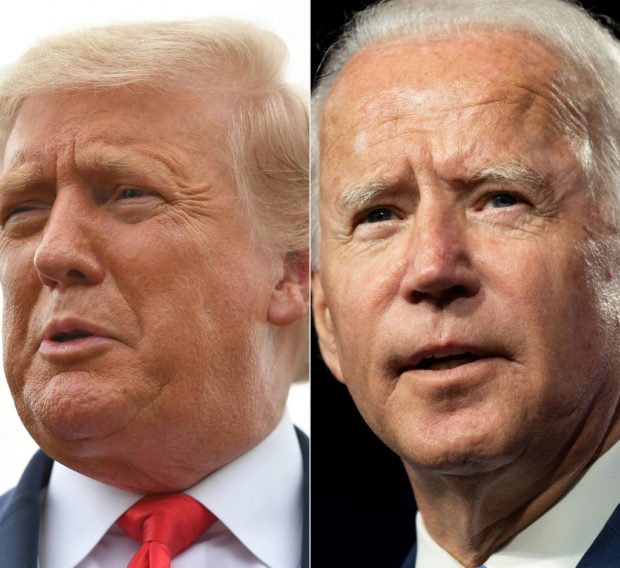MANILA, Philippines — With the coronavirus pandemic prompting Americans to vote early or demand mail-in balloting, two possible scenarios may play out on Nov. 3, D-Day for the presidential race in the United States: A decisive result of the presidential election will be known immediately or Americans and the rest of the world will wait at least two more days until all other votes in key battleground states are counted.
For Dr. Meena Bose, a professor of political science and executive dean for public policy and public service at Hofstra University, if it’s a decisive result, it will likely be a victory for former US vice president and Democratic candidate for president Joe Biden, who has been leading US President Donald Trump of the Republican Party in national polls.
First in US history
“On Election Day, it could be a long evening depending on when polls closed and which states would be able to return results,” Bose told participants, including the Inquirer, in the US Foreign Center Virtual Reporting Tour on the 2020 US elections.
Due to the pandemic, American voters either opted to vote early by going to poll centers or requested ballots that they will return to early voting locations or send back by mail.
Indeed, three days before the election, close to 94 million Americans had already voted. “For the first time in US history, more votes are likely to be cast before the election than on Election Day,” said Bose.
Asked when the winner will be known, she said: “I would say this, I think that by 11 p.m. on election night, we will know whether there is a decision or whether we need to wait to see the vote counts in states like Pennsylvania, Michigan and if there are issues with vote counting in Florida.”
“The early answer is by 11 o’clock Tuesday night (Wednesday morning in Manila) and that will either be decisive. I would say if it will be decisive, it will be likely for Biden. I would say if it is unclear, then it could be Thursday or Friday,” she added.
Pennsylvania and Michigan are key states in the election, according to Bose.
Polls in the United States, which has four time zones, close at different hours and the first significant result may come from Ohio, which had voted Republican in recent elections, Bose said.
Also significant will be the results in Florida, a state she described as “highly predictive” if Biden wins there.
“If Biden wins Florida, then the path of President Trump’s reelection is very narrow. If President Trump wins Florida, then again it’s a narrow path but there are more opportunities (for Biden),” she added.
Bose said some states matter to Trump’s reelection because “there are no states at this point that are really viewed as in contention to shift from Democrat to Republican.”
“The question is whether some of these states that voted Republican would shift to Democrat. That’s why I said there are many routes for the Biden campaign, (and) much narrow route for the president’s reelection,” she said.
Americans elect their president through an electoral college which has 538 members. As stated earlier to the US virtual reporting participants by Mark J. Rozell, dean of Schar School of Policy and Government of George Mason University, the 538 electors “generally follow results of popular vote in their states but the goal of candidates is to win states, not the overall popular vote.”
A presidential candidate needs 270 of 538 votes to win, and if no one has 270, the House of Representatives will choose the President, according to both Rozell and Bose.
Showing 10 states–including Florida (29 electoral votes), Pennsylvania (20) and Texas (38) that Trump won in 2016 with 306 electoral votes–Bose said the resident “can’t really lose more than two states without falling far below 270 votes.”
“If a large state like Florida changes, then the path of victory for Trump becomes very narrow. If a state like Texas shows Trump is ahead but within the margin of error, if Texas actually shifts to Democrats, then I would say the election is pretty much over,” she said.
